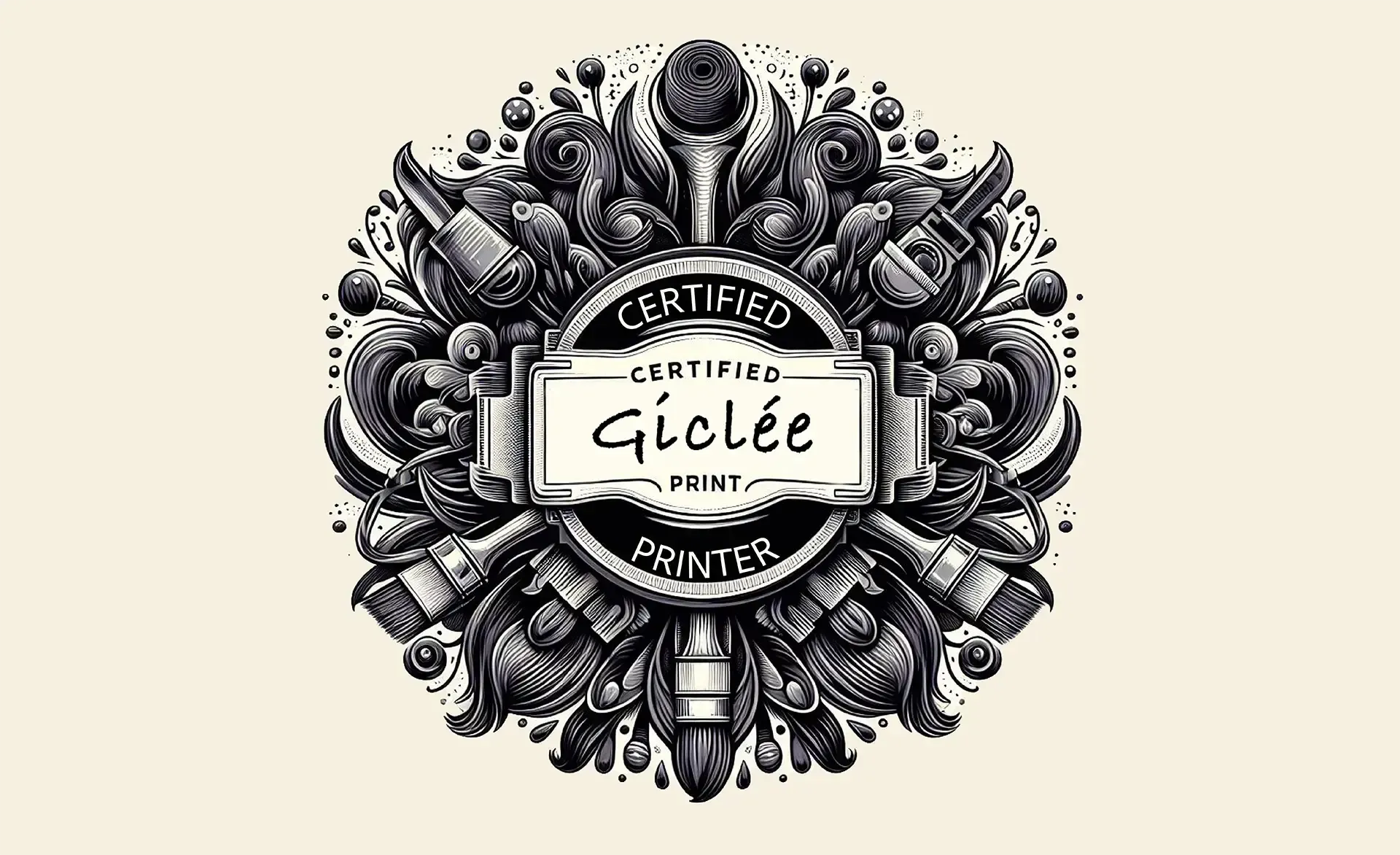By Becka Fortune
•
May 1, 2024
The Giclée printing process is a meticulous and technologically advanced method that helps artists create high-quality reproductions of their original artworks. We have a nine-step checklist we use to describe the process of creating giclée prints: High-resolution photography or Scanning The process commences with meticulous high-resolution Scanning, where the artwork is digitized using state-of-the-art equipment. This cutting-edge technology, with its unparalleled precision, captures the piece's intricate detail and nuance, instilling unwavering confidence in the artist that the reproduction will genuinely reflect their original work. This step forms the solid foundation for the subsequent printing process. Paper The choice of print media, whether it's canvas for a more textured look or bamboo for a unique, eco-friendly option, is also critical, as it can significantly impact the final appearance of the print. We help artists and collectors select the best print media for a particular work based on texture, weight, and overall aesthetic. The digital image is precisely transferred onto the chosen print media using the inkjet printer during the printing process. The printer applies the ink with incredible accuracy, ensuring it faithfully reproduces every detail of the original artwork. Printing is a slow and meticulous process, as the printer must lay down multiple layers of ink to achieve the desired depth and richness of color. Color Matching Once the artwork is digitized, the next step is color matching, a process that demands the expertise of our skilled technicians. Using advanced software and our experienced eye for color, we meticulously adjust the digital image. Color matching, a blend of art and science, ensures that it closely matches the colors and tones of the original artwork, providing collectors with the assurance that the reproduction faithfully captures the essence of the original piece. Proofs After color matching, the technicians create a proof. A proof is a test print that allows the artist and the printing team to assess the colors' accuracy and the reproduction's overall quality. This stage is crucial as it ensures that the final print will faithfully represent the original artwork. If any adjustments are needed, the technicians make them at this stage before proceeding with the final print run. Printing The actual printing process is where the magic happens. We produce Giclée prints using high-end Epson inkjet printers specifically designed for fine art reproduction. Our Epson printers come with archival-quality inks that are fade-resistant and have a longer lifespan. They can reproduce various colors and create stunningly detailed images. Finishing Touches After the printing is complete, the Giclée print may undergo additional finishing touches. Finishing touches can include: ensuring the proper environment for the print to dry, trimming the print to the desired size, stretching it onto a canvas frame, applying a protective varnish to enhance the colors and protect the surface from UV light and other environmental factors. Each step requires skill and attention to detail to ensure that the final product meets the artist and collector's highest quality standards. Quality Contol Control Quality control is an integral and rigorous part of the Giclée printing process. It involves carefully inspecting each print for defects, such as blemishes, color inconsistencies, or artifacts. Only prints that meet the strictest quality standards, ensuring faithful reproduction of the original artwork, are approved for release. This meticulous process ensures that the final product meets the artist and collector's highest quality standards, instilling confidence in its fidelity and longevity. Limited Editions If an artist such as Beth Palmer or a photographer such as Shepard Barnes chooses to create a limited edition series, they typically sign and number each print by hand. Limited Editions, often produced in a smaller quantity than open edition prints, add a personal touch and increase the value of the prints for collectors, making them more exclusive and desirable. Packaging Finally, the team carefully packages the finished Giclée prints to protect them during shipping. Depending on the size and fragility of the piece, they may be rolled in tubes, wrapped in acid-free tissue paper to prevent color transfer, or placed in custom-designed boxes with foam inserts for added protection. The prints are then shipped to customers or galleries, ready to be displayed and appreciated for their incredible beauty and craftsmanship. In conclusion, the Giclée printing process is a testament to the convergence of art and technology. It allows artists to create stunning reproductions of their work virtually indistinguishable from the original, making it more accessible to a broader audience. Compared to traditional printing methods, Giclée prints offer superior color accuracy, longevity, and detail, making them a worthwhile investment for both artists and collectors. The level of hard-earned skill, expertise, and attention to detail that goes into each step of the process is truly remarkable, and it is no wonder that art collectors and enthusiasts worldwide highly prize Giclée prints. Sadly, not all giclée prints are valid. That's why we're creating universal standards for prints, which include criteria for color accuracy, print longevity, and materials used. These standards are enforced through a network of printers who understand and adhere to them. If you're a Giclée Printer, we invite you to join our network . If you're an artist or collector, look for our Certified Giclée logo, which guarantees that the print meets these high standards.




